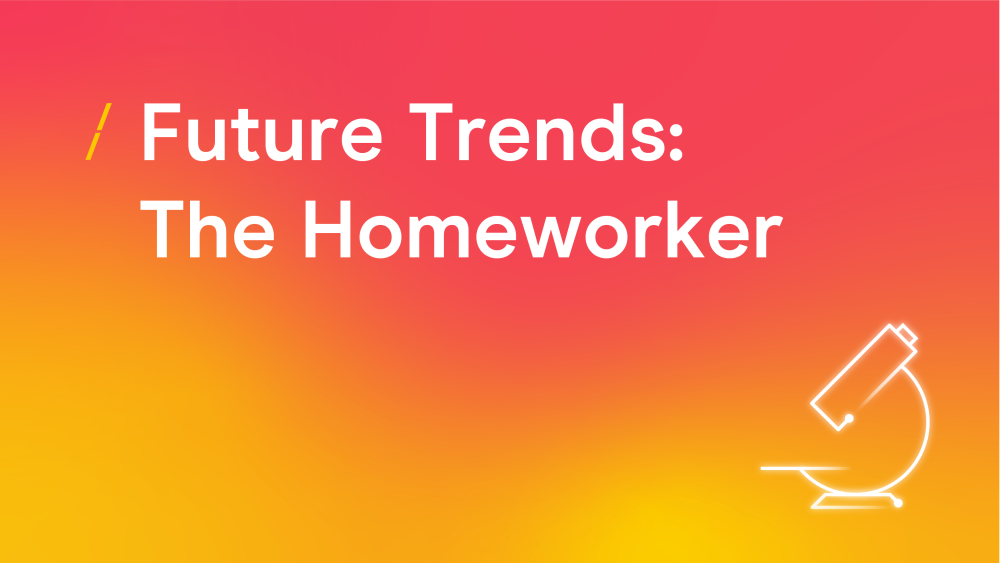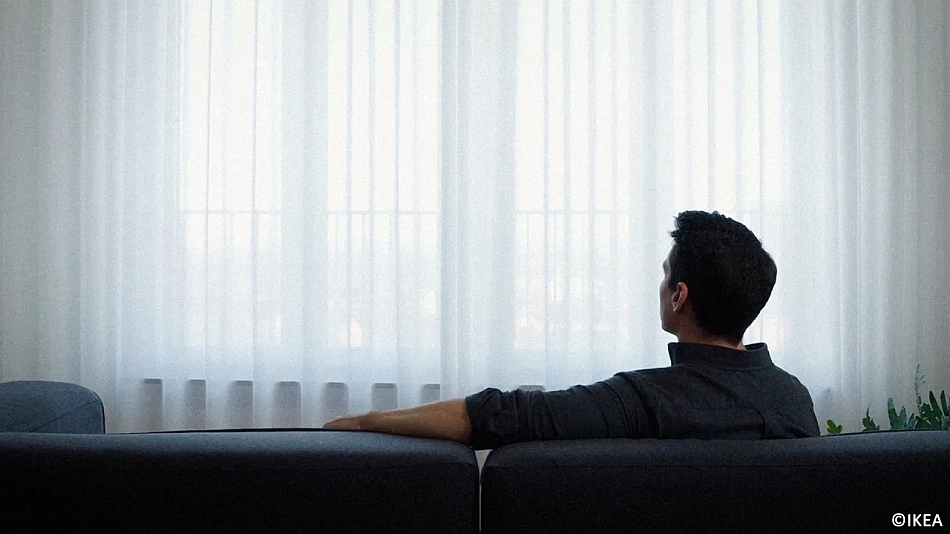Future Trends: The Homeworker
30 Jul 2019

As we saw in the previous chapter of the Future Trends series, our lives are constantly changing thanks to technology, and now more so than ever things are conntected.
We no longer need to be in a specific place to do something or talk to someone.
As a result of technological advancements within the home, the concept of ‘working’ is no longer constricted to the ‘office’ and leaving the home for work is no longer necessary.
Insights
In the last 20 years, we’ve witnessed a change as more employees choose to work from home, rather than commute to the office.
Homes can now easily turn into offices and, consequentially, the places where people live need to address these new behaviours.
In 1999 just one in ten full-time workers were working from home. Now, it’s one in four (26%) and the forecast for this trend is that it will grow even further, reaching 30% by 2025.
Within the last decade, the data shows a strong presence of younger, female employees choosing to work from home and we expect this pattern to continue.
Moreover, data reveals that 27% of those choosing to work from home, earn more than £3,000 a month against only 10% of Office-workers (going forward, this is how we will refer to workers who never work from home) who earn a salary above this threshold
As a side note, although we have only looked into the UK’s scenario, the behaviour has grown across many other countries.
Behind this trend there is a wide variety of personal, societal, technological and economic factors - from business up-taking cloud computing to the time/cost efficiencies in avoiding the stressful and overcrowded experience of commuting.
Beyond these reasons that encourage people to work from home, we looked into what characteristics The Homeworker identify with and how they express themselves.
The Office-worker states family (63%) followed by knowledge (55%) and friends (50%) as their top core identifiers.
For The Homeworker, on the other hand, the third place is occupied by the home (49%) revealing how the house is a significant to those who choose not to travel into work.
Finally, among 22 attributes, friendship sits on the 11th place overall – holidays (47%), food (47%) and even work itself (45%) are happily placed on top of their list.
Opportunities
As the house assumes a key role in The Homeworker’s life, we looked into two areas of interest impacting the quality of life and time spent within the home.
As The Homeworker needs to meet deadlines, there is an increased need to find new ways to encourage concentration, focus their attention and make the best out of their time.
Furthermore, The Homeworker is looking for a healthy and clean space, to feel comfortable and supported while working.
1. Concetration seekers
If the home is now also the place where people deal with work emails and deadlines, then time management is fundamental.
Attention is in short supply and tends to vanish easily, making one of the top struggles for The Homeworker is trying to reach the right headspace to get the job done.
As smart technologies clamour for attention they risk becoming intrusive, there is a new need to create an appropriate atmosphere to allow the person to get to the right mindset and mood to work efficiently.
Due to the presence of the internet, smartphones and other devices, 41% of people say they find it difficult to concentrate and 45% desire more control over their productivity – twice as many as The Office-worker.
Consequentially, there is a set of clearly unmet needs to support productivity and concentration.
Case study: Dolby

Noise-cancelling technology
Specifically for in-home entertainment, in 2018 Dolby launched Dimension, a particular type of wireless headphones featuring a noise-cancelling technology.
With its special feature called LifeMix, Dimension allows users to control how much sound can be heard in their immediate surroundings, guaranteeing a quiet peace of mind while also remaining aware of the sounds that may require their attention.
Case study: IKEA and Byredo

Mood-base home fragrances
During a collaboration between the students of the London’s Royal College of Art and the Swedish fragrance brand Byredo at a workshop hosted by IKEA, thinkers developed new ways in which people can express their personality and moods through scents in different areas of the home.
The ideas led to a home fragrance player able to release scents in a similar way to a record playing music, starting from the insight that different fragrances can change the mood of the home throughout the day. As a final result, IKEA and Byredo are due to launch a collection in 2019.
2. The Healthy Home
More than ever before lifestyles choices have become important, not only for people physical health but also for their mental wellness.
In 2016, 44% of UK adults declared to be worried about the prospect of their future health and 84% added that wellbeing management should be under their own responsibility.
Compared to the past, we seeing more moderate lifestyles related choices, particularly among younger consumers. In this scenario, JOMO (the joy of missing out) is replacing FOMO (fear of missing out): for instance, in 2017, six out of ten British consumers chose relaxation as their top-valued entertainment activity.
In particular, healthy living has become a priority for The Homeworker, due to the amount of time spent within the walls of their home. Lead by a holistic approach to health, The Homeworker is looking for a better sleep quality, more opportunities to exercise, and even how to encorporate some meditation and a more thoughtful diet.
However, beyond changing or improving behaviours, the solutions to mitigate the external risks to health to permeate the home space.
In 2016, 16% of GB adults said to fear the effect of pollution, in particular for those aged 16-24s (21%). Therefore, consumers are now focusing on air, noise and light pollution: how to keep them out of their home and prevent any present or future danger.
Case study: IKEA

Removing pollution using light
Beginning of 2019 Ikea announced the launch of Gunrid, an air-purifying curtain, which will be available in stores in 2020.
Thanks to a technology developed in partnership with European and Asian universities, Ikea was able to create something similar to the photosynthesis process using both indoor and outdoor light.
Creating an aesthetic solution, IKEA aims to introduce a product able to reduce pollution.
Case study: Clare

Low-pollutant paint
Clare, a paint brand that starting from 55 colours and by answering simple questions about the house and its owners through the Colour Genius Chatbot, narrows down to a selection of just three tints making buying paint easy.
All paints are low-chemical and, even if not legally required, the company provides a list of all the ingredients which meet the most stringent standards for low-pollutant paints.
Finding our Future Trends series interesting? Don't miss the last piece about The Home - live on Tuesday 6th August 2019.




Please login to comment.
Comments